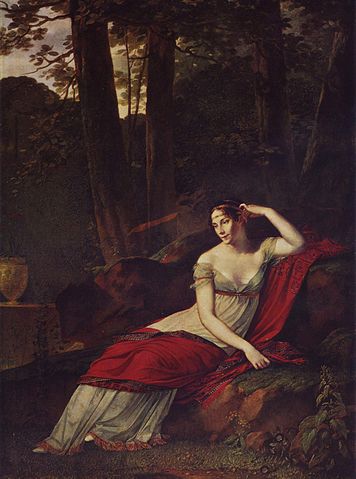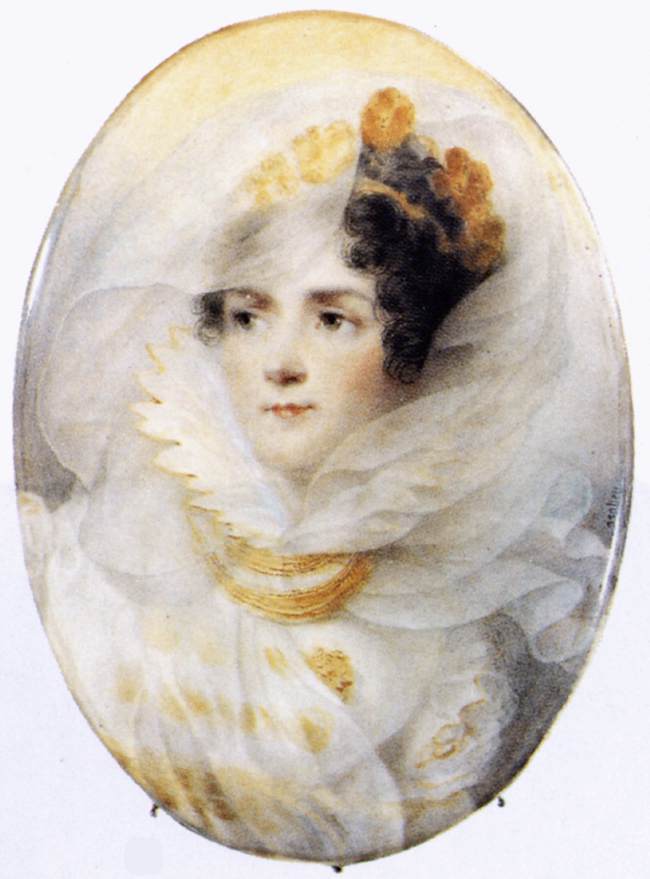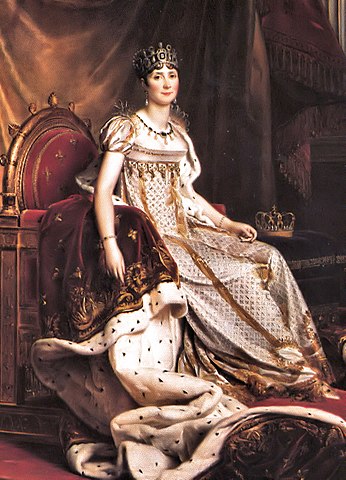

Author of Historical Fiction and Nonfiction

Although my novel is set in England during the late Georgian/Regency era, there is no denying the near-constant and pervasive influence of the French on the fashions of that time. Napoleon’s two empresses were significant in the development of French fashion. France had influenced English and European fashion prior to the French Revolution and the rise of Napoleon. Even items that originated elsewhere (such as the English soft full-cut lingerie gown, and the spencer) were adapted and carried to new heights in France. During periods when travel to France not an option, and when blockades prevented import of French fabrics and trim, English fashion took its own turns, but came under French influence again when travel again possible (e.g . 1802-Peace of Amien, after Napoleon exiled to Elba in 1814, and finally after Waterloo in 1815-importation of French silks, trims, etc.). There was a brief period after Waterloo when Paris tried styles a la anglais, but they didn’t really catch on in France, and the English were again traveling in and buying French fashion and goods. In the Directoire and Empire periods, Josephine was tremendously influential. Neo-classical and Egyptian lines and accessories became extremely popular. After the Revolution and the Terror, Josephine was prominent in Directoire society, and soon became a style leader. This, of course, was solidified with her marriage to Napoleon and his crowning of her as Empress. Their relationship was very romantic (even though neither was faithful). Even when Napoleon disapproved of her fashion choices, she wore what she liked. She is credited with the fashion for the Kashmir shawl, owning several hundreds of them. She evolved a fashion that was a combination of classical simplicity and regal opulence. She preferred slender fitting, flowing dresses, of extremely sheer, floating fabrics. Some were very transparent. The classical hairstyles, filets, etc. were also popular. Josephine achieved a very misty, romantic look, as seen in her portrait by Isabey.

Low heels came in fashion after the French Revolution (so that all were on an equal level, as high heels associated with wealthy aristocrats).
Once he discovered he was able to father children (the results of affairs while married to Josephine), Napoleon became obsessed with having a legitimate heir for his empire. He divorced Josephine in January of 1810. He settled on the Marie-Louise, the Austrian archduchess, less for romantic reasons than for the political alliance (he thought he’d have more influence and control over the Austrian emperor), combined with a young attractive girl with a womb. As an Austrian arch-duchess, Marie-Louise’s style was more formal and conservative, with elaborate styling, and skirts more full and bell-shaped.

After their marriage in March of 1810, her fashion choices were more influenced by Napoleon’s preferences, sometimes harking back to Josephine. These two portraits reflect similar composition, making it easy to see some similarities and some differences. Josephine’s gown is clearly of a lighter weight, and tends to show the line of the extended leg. Marie-Louise’s gown has a similar line, with the high waist, low neck, and short puffed sleeve, but is of a heavier fabric that skims the body. Josephine’s crown is lighter, as befits the airier style. Marie-Louise’s is definitely a heavier, more structured Imperial style.


Comments are closed.
Fashion played a signifcant role during the Gerogian/Regency era. Fabrics, embellishments and clothing styple were followed closely as women were often accepted or shunned based on their abitlity to correcly interpret the “forward fashion” of the day. The monach played a signifant role in defining both mens and womens fashion. Fabric selection, laces, ribbons and other embellishments were critical is ones perceived success in London at the time of the Regency period. Indeed, the French provided much guidance in how this was interpretted or outrighlty copied by the English. The Victoria and Albert Museum in London is a wonderful place to both view and study fashion of this period.
You are so right, Brenda! As I was researching this, it also struck me that the fabrics could almost be a
metaphor for the woman: Josephine was born in Martinique of respectable birth, and lived a very “on the fringe” lifestyle before she and Napoleon got together: the soft, revealing fabrics have a sensuous quality that goes with that. Marie-Louise, on the other hand, was Austrian royalty and had a very formal, etiquette-dictated life, which is better suited by the weightier fabircs.
Nice post–I especially liked the contrast between Josephine and Marie-Louise’s court dress and fashions.
Thank you, Angelyn! I’m glad you enjoyed it.
Thanks for a very interesting post!
Some time ago I visited an exhibition on Louis Napoleon & his wife Hortense and there was a great display of the clothes/shoes she had worn.
Am always amazed about how well-kept such old (and often fragile) fabrics are and how elegant the fashion of those days was !!
Thanks again for this lovely start of the day 🙂
I am so glad you enjoyed it, Marianne! It is amazing to see the exhibits of wonderful
clothes.
In one way the clothes made them powerless (impractical, flimsy and easy to fall out of) but they also gave woman the power to use their feminine seductiveness.
Very true; a double-edged sword!
Fascinating entry.